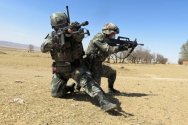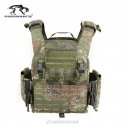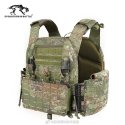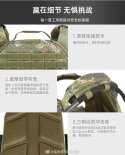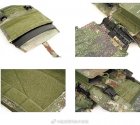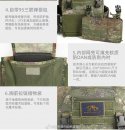D
You are using an out of date browser. It may not display this or other websites correctly.
You should upgrade or use an alternative browser.
You should upgrade or use an alternative browser.
Infantry Combat Equipment (non-firearm): Vests, Body Armor, NVGs, etc.
- Thread starter by78
- Start date
I have never seen a military where second line plates are deliberately made. Sometimes first generation plates are used by second line units, sapi vs esapi in US for example. It could be that these are some of the earliest plates obtained by the PLA and are not reflective of whatever modern plate they use. Only issue with that theory is that we should've seen them already in use if they're older.I don’t think we can necessarily make the conclusion that the higher weight is automatically indicative of intention. You could replace UHMWPE with Aramid fiber and obviously the Aramid just by physical density.
I would say your technological inferiority conclusion could lend credence to the idea that these could be meant for 2nd line duty. The lower density materials are naturally more expensive owing to their more complex production requirements, so maybe they are reserved for certain units?
Even if Chinese companies lack the capability to produce the grade of PE at the level of American companies, certainly the military would compensate in whatever way necessary to meet their requirements.
Some other ideas? If it is indeed second line equipment, perhaps it is why you were able to obtain it easily?
Finally, perhaps the PLA simply does not deem protection against 308 rounds a priority overall and the heavier weight is simply indicative of the cost tradeoff they decided to go with.
Anyway, just tossing some ideas
The only outlier is the round, the plates are virtually the same in results but the round is a tungsten penetrator. It still deformed enough to kill but the fact that it didn't penetrate is very interesting. It means that these plates are on the right track. They just need to be lighter while thicker, a progressive upgrade is needed. A very similar line of progress as the Esapi plates went through with their revisions.Curious about what's going on with the outlier on the first plate you tested that had good results.
As I don't have any specific information, I didn't want to pollute with too much conjecture, but I will just expand a bit in case it may provide any inspiration.I have never seen a military where second line plates are deliberately made. Sometimes first generation plates are used by second line units, sapi vs esapi in US for example. It could be that these are some of the earliest plates obtained by the PLA and are not reflective of whatever modern plate they use. Only issue with that theory is that we should've seen them already in use if they're older.
To me it sounds like the plate is simply not designed to stop 308. Probably is actually using inferior grade (and therefore heavier) PE for cost savings. PE quality is basically dependent on the modernity of the production equipment (temperature control being the big factor), nothing really exotic about it, so probably this is a conscious choice not to invest in it. As I mentioned, if the specification was to stop 308, then it would be a known constraint to compensate for.
The flip side is corruption, which is possible, but we would need a lot more plates to know that. This would be a very high risk project to skim off of.
I think @EdgeOfEcho is on the right track, body armour is a recent thing for PLA, so it might be a case of "walk before you run". For America and Russia, they have been in many conflicts throughout the 90's until now, so the higher level of equipment is probably reflective of this. In addition (not being political here), but the civil security situation in America also creates a certain market that doesn't exist elsewhere. China has only had UN operations and domestic counter terrorism, which probably just imported equipment due to the smaller quantities. In general PLA procurement practice does make smaller purchases and iterate over time. Maybe it makes economical sense for the PE producers to upgrade their equipment, you will see an upgrade in the armor protection.
Anyway, all guessing
I think it's because the PLA get lower priority than PAP and police forces. I think the very best ballistic armor goes to SWAT teams rather than the miltiary and PAPThanks for providing us with these detailed info and insights on the plate's performance! Looking forward to your eventual video on it.
Gotta say I'm a bit disappointed with the plate's performance based on your testing results. I expected it to perform at the same level as the best Western and Russian armors in terms of protection level and weight, but I guess that was an unrealistic expectation.
That being said, if this is going to be plate that will see wide spread adoption in the PLA, I guess it is still pretty reasonable. I rarely see PLA soldiers wear body armor, 99% of the time the soldiers just wear a chest rig. I think I've only seen PLA soldiers wear armor in combat situations (e.g., peacekeeping troops overseas or border stand-off with India). Before the type 19/21 infantry equipment came out, only a few units have chest rigs, and I don't think these units even use plates routinely (PAP is obviously a bit of a different story). If this is going to be the first proper armor system that will see wide-spread adoption and active use in the PLA, I guess that's not that bad - actually, I think it's even pretty decent! It's not easy to get it operating at top tier level in the first go, it does take time for things to mature.
If we assume the plates in Oxide's procession will be the standard issue plate for the next 5 -10ish years in the PLA, a good question to ask is what are the factors that have lead to it's current level of performance?
Does this plate represent the state-of-the-art, or the best armor technology China can offer? In other words, is the plate's mediocre performance (when compared to the best armors out there) due to a lack of technology or other factors? If China has the capability to make better armor, why does the PLA not adopt them? Is it due to cost or are there other considerations?
I think these are some interesting questions worthy of further discussion (I have no idea what the answers are...)
This is why Chinese SWAT teams look way better equiped than the Army it self.
Materials can behave in counterintuitive ways since there are many important properties and most of them affect the performance in a non-linear way. Tungsten for example is not best stopped by overly hard materials since the "deform/break then absorb" scheme doesn't work well against it. Softer but denser and tougher materials usually do better against it. This is why silicon carbide does better than boron carbide against tungsten rounds despite being softer and having less tensile strength.The whacky part is that the other plate still stopped a tungsten round... something that those other oem plates cannot do. So, I must now do the painstaking process of checking quality and ungluing layers. It could've been damaged enroute.
So there are three possible explanations
1- The Chinese plates may have a different focus than the US plates. Like they may have more focus on tungsten rounds or fragments.
2- China may still be refraining from spending high budgets on its infantry.
3- What you got are rejected or lower-capability OEM plates.
This forum is pro-China so most users will hope for the third explanation and it is a possibility indeed. But 1st and 2nd explanations are possible too. Having detailed knowledge about the details of the plates would be very hard for PLA watchers. When it comes to the PLA even numbers like ship length and aircraft wing span are just ballpark numbers interpreted from photos.
D
Deleted member 13257
Guest
The difference here is Swat Army isn't even close to the quantity of shipped equipment that of PLA and PAP not only that they are independent units who provide the gear and equipment with their own money.I think it's because the PLA get lower priority than PAP and police forces. I think the very best ballistic armor goes to SWAT teams rather than the miltiary and PAP
This is why Chinese SWAT teams look way better equiped than the Army it self.
Wherever oxhide got that Plate Carrier I'd like to know where I remember seeing a video where the PLA was showcasing multiple plate carriers and so far I have never seen the one Oxhide had gotten.
plawolf
Lieutenant General
I have never seen a military where second line plates are deliberately made. Sometimes first generation plates are used by second line units, sapi vs esapi in US for example. It could be that these are some of the earliest plates obtained by the PLA and are not reflective of whatever modern plate they use. Only issue with that theory is that we should've seen them already in use if they're older.
The only outlier is the round, the plates are virtually the same in results but the round is a tungsten penetrator. It still deformed enough to kill but the fact that it didn't penetrate is very interesting. It means that these plates are on the right track. They just need to be lighter while thicker, a progressive upgrade is needed. A very similar line of progress as the Esapi plates went through with their revisions.
Two points, just because the PLA does not issue them does not mean they didn’t not purchase them.
Generally the PLA are still a little too precious with their gear. They will buy them but not issue for use generally, because for perishables, as plates would need to be considered as, you will have two very different replace by dates depending on if said plates were stored neatly in a warehouse or being bashed around by troopers in the field.
The second consideration is cost. Again, maybe an alien concept for the US military, but the PLA demands pretty high cost effectiveness from equipment they purchase, and they will often not buy state-of-the-art if good enough gets them 90% of the capacity for 50% the price.
That’s not across the board, and the PLA do go all out and buy top of the line, but those tend to be for war winning stuff like 5th gen fighters, missiles, radars and they like, the purchase of which can be afforded because they get value for money on things like body armour and they like.
But back on topic, assuming the plates you got where really military issue instead of civilian, it is still possible that they are old plates that have spent their entire useful lives in a military warehouse and now ended up on the market after the military disposed of them. Is there any way for you to find out manufacturing date of them? If they are age expired, it could also explain the unusually heavy back face deformation as well as their weight if they were made years ago.
by78
General
A list of items the make up the new individual soldier system. Unfortunately, I could not find better quality images, so this makes translation difficult.
The list is broken into several categories (clockwise from bottom left).
- Communications systems: radios, smart fore grip, glow sticks, IFF, binoculars, smart terminal, rifle scope image acquisition and transceiver module, etc.
- Combat systems: the assault rifle, various scopes, grenades, combat knife, tactical flashlight, pistol, etc.
- Combat uniform and equipment care systems: the uniform itself, helmet, visor, pads, canteens, various accessory pouches, personal care products, pen and notebook, first aid kit, rifle cleaning kit, etc.
- Battery charger, etc.
Overall, quite a comprehensive set of equipment, which explains the necessity of the rucksack.


Another illustration from what I believe to be the same document. It shows off the various bags and sacks and how they go together. There are four available: 1) basic accessory bag, which is used to carry in one place mag pouches, pistol holster, canteen pouch, and everything that can hang off the tactical vest; 2) tactical backpack for going on missions; 3) duffle bag; 4) large rucksack for carrying supplies and items needed for daily living, presumably personal hygiene items, bedding, tent, etc.
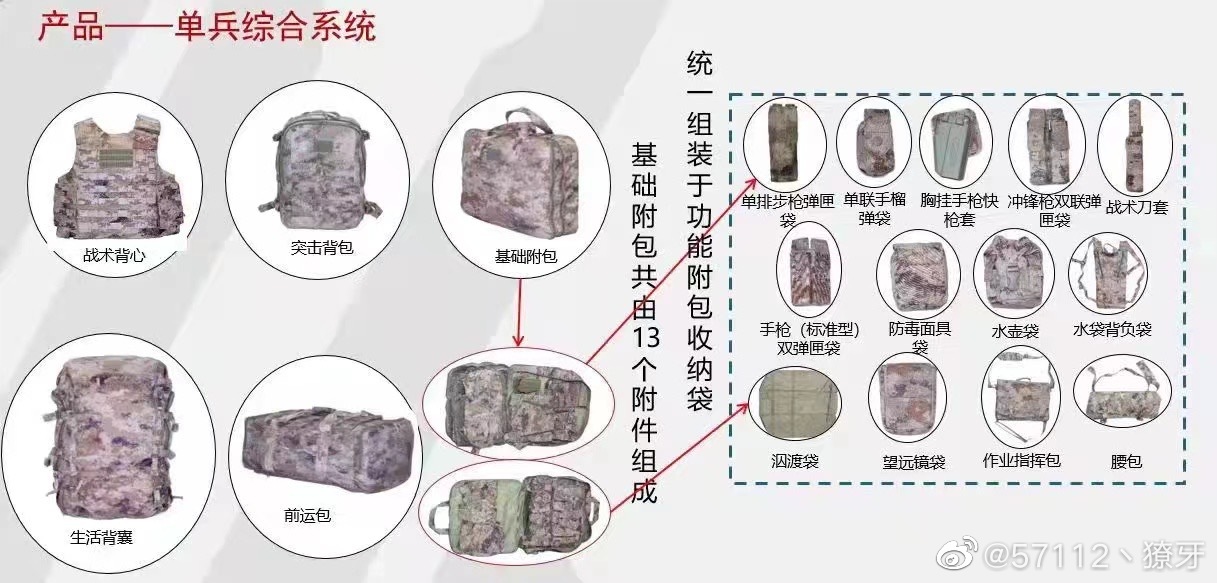
by78
General
Two more images of Kestrel's MARS 2.0 augmented reality system. The second image is a high-resolution version of a previously shared image.

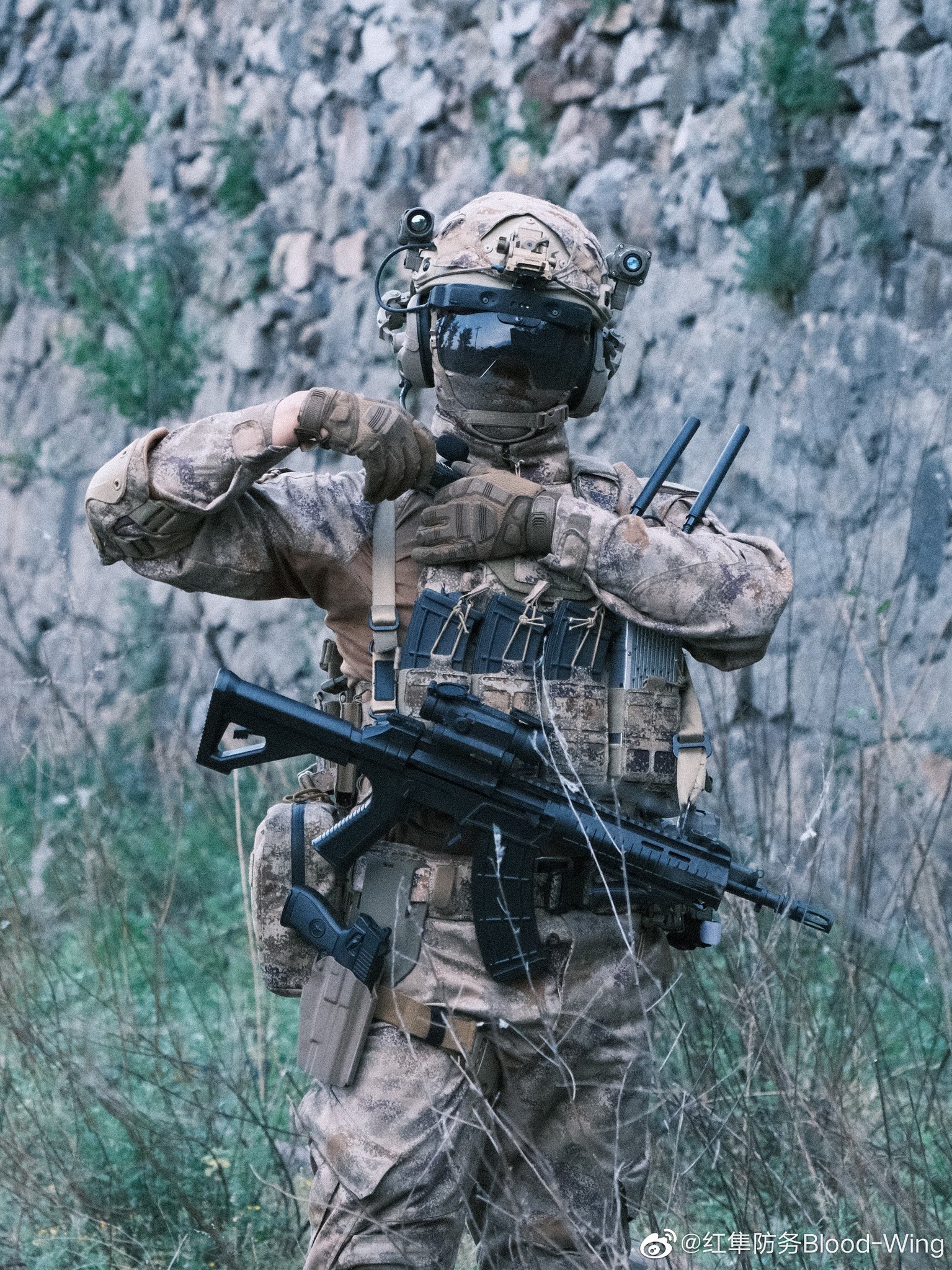
One more...


